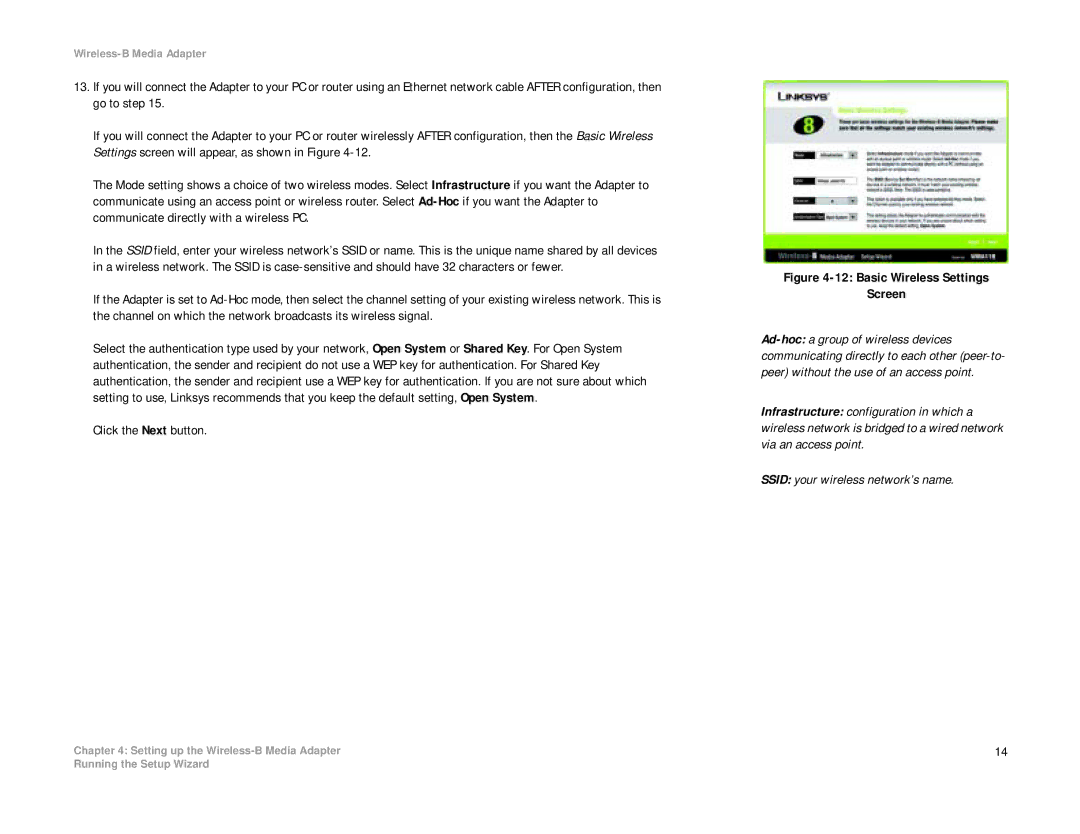
Wireless-B Media Adapter
13.If you will connect the Adapter to your PC or router using an Ethernet network cable AFTER configuration, then go to step 15.
If you will connect the Adapter to your PC or router wirelessly AFTER configuration, then the Basic Wireless Settings screen will appear, as shown in Figure
The Mode setting shows a choice of two wireless modes. Select Infrastructure if you want the Adapter to communicate using an access point or wireless router. Select
In the SSID field, enter your wireless network’s SSID or name. This is the unique name shared by all devices in a wireless network. The SSID is
If the Adapter is set to
Select the authentication type used by your network, Open System or Shared Key. For Open System authentication, the sender and recipient do not use a WEP key for authentication. For Shared Key authentication, the sender and recipient use a WEP key for authentication. If you are not sure about which setting to use, Linksys recommends that you keep the default setting, Open System.
Click the Next button.
Chapter 4: Setting up the
Figure 4-12: Basic Wireless Settings
Screen
Infrastructure: configuration in which a wireless network is bridged to a wired network via an access point.
SSID: your wireless network’s name.
14
Running the Setup Wizard
